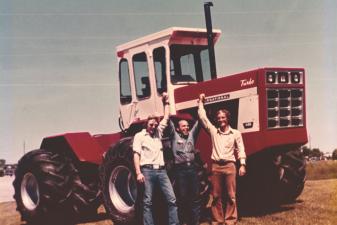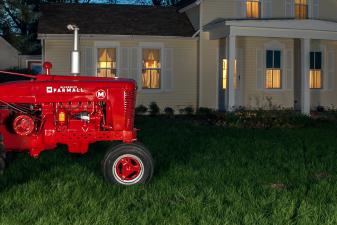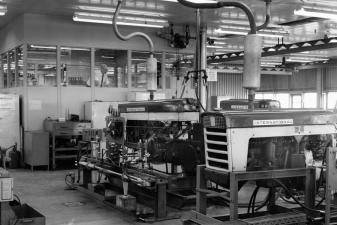The Introduction of the 560
An Excerpt from Red Tractors 1958–2018

In 1959, Harvester issued a widespread recall of all 460 and 560 model tractors due to a manufacturing flaw encountered out on the field. Harvester’s quick fixes and responsive action allowed for the series to outlive the poor publicity generated from the recall. In fact, the 60 Series would pave the way for IHC’s best sales year yet, that very same year in 1959. Read more accounts of farm-industry engineering, developing, and company maneuvering in the new edition Red Tractors 1958–2018. And check out the Octane Press FUEL Blog for the insider scoop on all your favorite brands, series, models, and prototypes.
The 460 and 560 models had something Harvester had not encountered much in the past: a manufacturing flaw. The rear differential’s bull and pinion gears galled under load and could fail under the right conditions. Very few of these tractors failed, but Harvester doubled the warranty on the 460s and 560s, and authorized dealers to charge them for the 19 hours of labor to replace the rear end. New parts were engineered and, eventually, a new oil formula was developed to help reduce strain on the parts. Finally, a massive recall of the 460, 560, and 660 tractors was issued in June 1959.
Kenneth Ryan, a young IHC engineer when the recall was taking place, remembers that dealers weren’t entirely displeased with the recall. They used the allowance for repairs to stay busy during the slow winter months and could perform the repair in less than the allotted 19 hours, turning a good profit.
The actual failure rate of the rear ends was fairly low, and the problem could be fixed with newly tooled parts and better oils. “Most of [the farmers] hadn’t seen a problem with their tractors,” Ryan said. “At the time, I wondered why not just wait and if your tractor does show these symptoms, rebuild it. I thought they were overreacting.”
The entire line, despite the poor publicity, was mainly a success. The 60 series tractors went on to long production lives, and the all-new 240 and 340 tractors were good upgrades to the line that were very well-received. The new square-front tractors brought welcome traffic into IH dealerships. The farm recession of 1957 also began to lift in spring 1958, and farmers found themselves more willing to spend money on new machines in late 1958.
Despite a strike that slowed production at the end of 1958, the new 40 and 60 series fueled the best sales year in the history of IHC in 1959. Total U.S. company sales were $1.7 billion, an increase of 24 percent from 1958. Farm equipment sales were $458 million, up 17 percent from 1958.
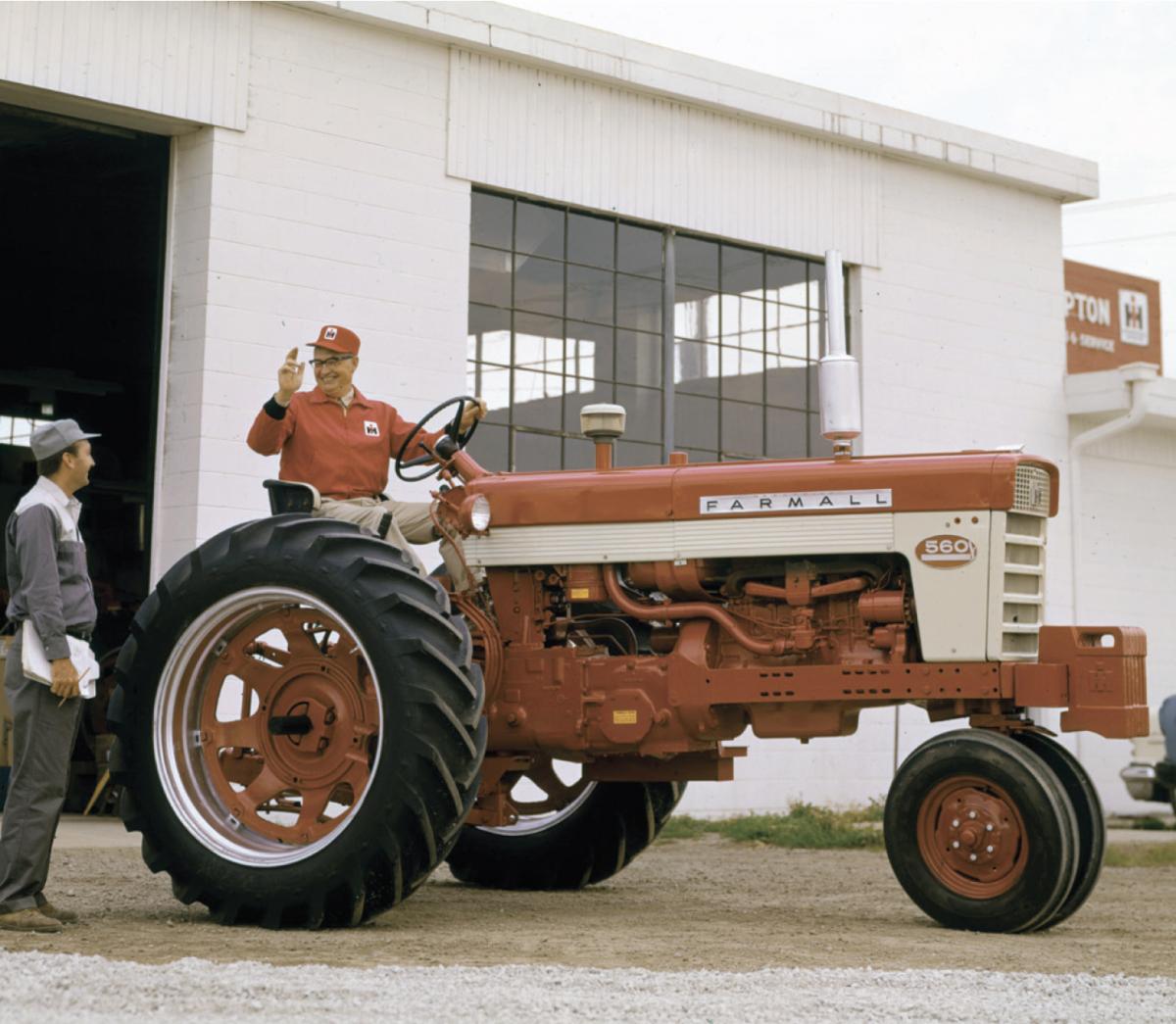 The rear-end failures that prompted Harvester to recall the 60 series tractors proved a fairly rare occurrence. Harvester responded admirably to the issue, but probably caused more negative publicity than necessary. The 60 series proved to be long-lasting reliable tractors for most farmers and were bulletproof once the new parts were installed in the rear end. Wisconsin Historical Society / 24639
The rear-end failures that prompted Harvester to recall the 60 series tractors proved a fairly rare occurrence. Harvester responded admirably to the issue, but probably caused more negative publicity than necessary. The 60 series proved to be long-lasting reliable tractors for most farmers and were bulletproof once the new parts were installed in the rear end. Wisconsin Historical Society / 24639
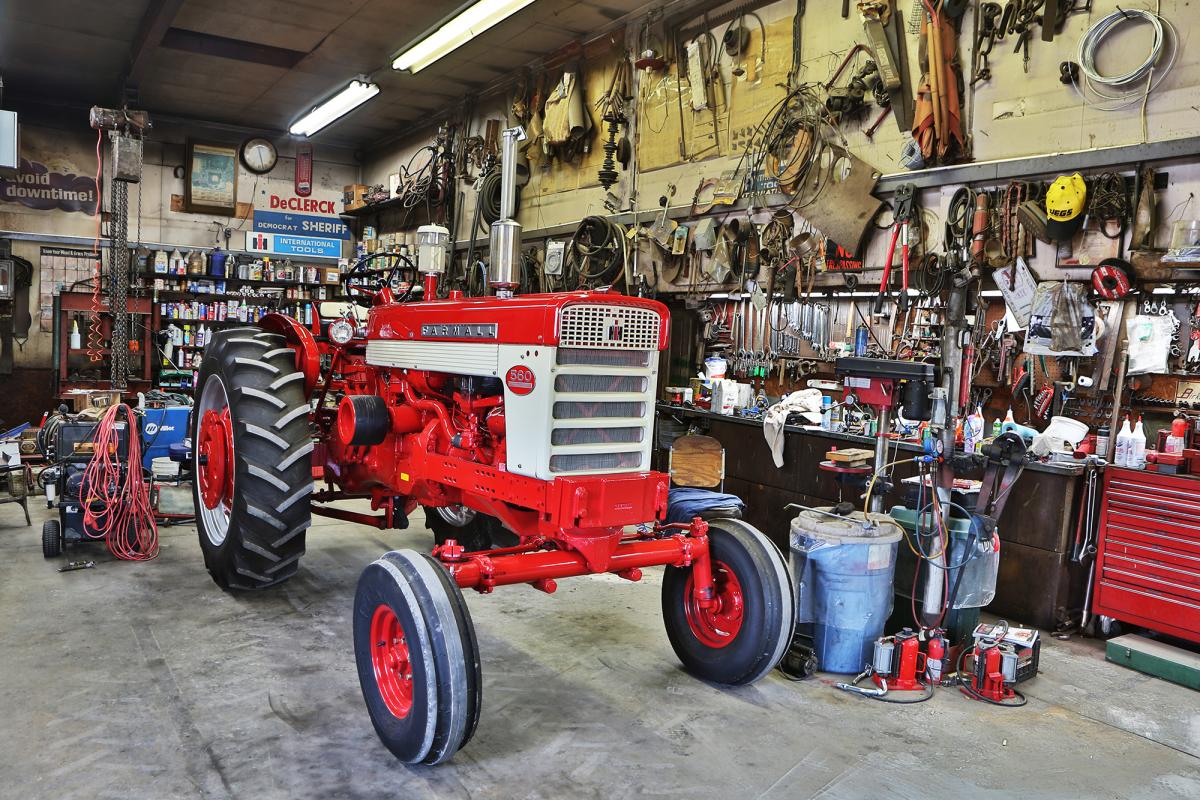 This 560 spent most of it’s life in southern Indiana, working on the farm owned by the father of well-known Chicago radio broadcaster Max Armstrong. The tractor was sold to a neighbor in the 1980s. The neighbor flipped the tractor over, and then it sat outside for many years. The 560 was returned to Max a few years ago in rough condition. The FFA chapter from the Prairie Central High School in Fairbury, Illinois restored the tractor to pristine condition, and the family heirloom is now Max’s pride and joy. “The lessons learned will stay with them all their lives,” Max said. “I’m proud to be one of the supporters of the FFA.” Max Armstrong collection / Lee Klancher
This 560 spent most of it’s life in southern Indiana, working on the farm owned by the father of well-known Chicago radio broadcaster Max Armstrong. The tractor was sold to a neighbor in the 1980s. The neighbor flipped the tractor over, and then it sat outside for many years. The 560 was returned to Max a few years ago in rough condition. The FFA chapter from the Prairie Central High School in Fairbury, Illinois restored the tractor to pristine condition, and the family heirloom is now Max’s pride and joy. “The lessons learned will stay with them all their lives,” Max said. “I’m proud to be one of the supporters of the FFA.” Max Armstrong collection / Lee Klancher
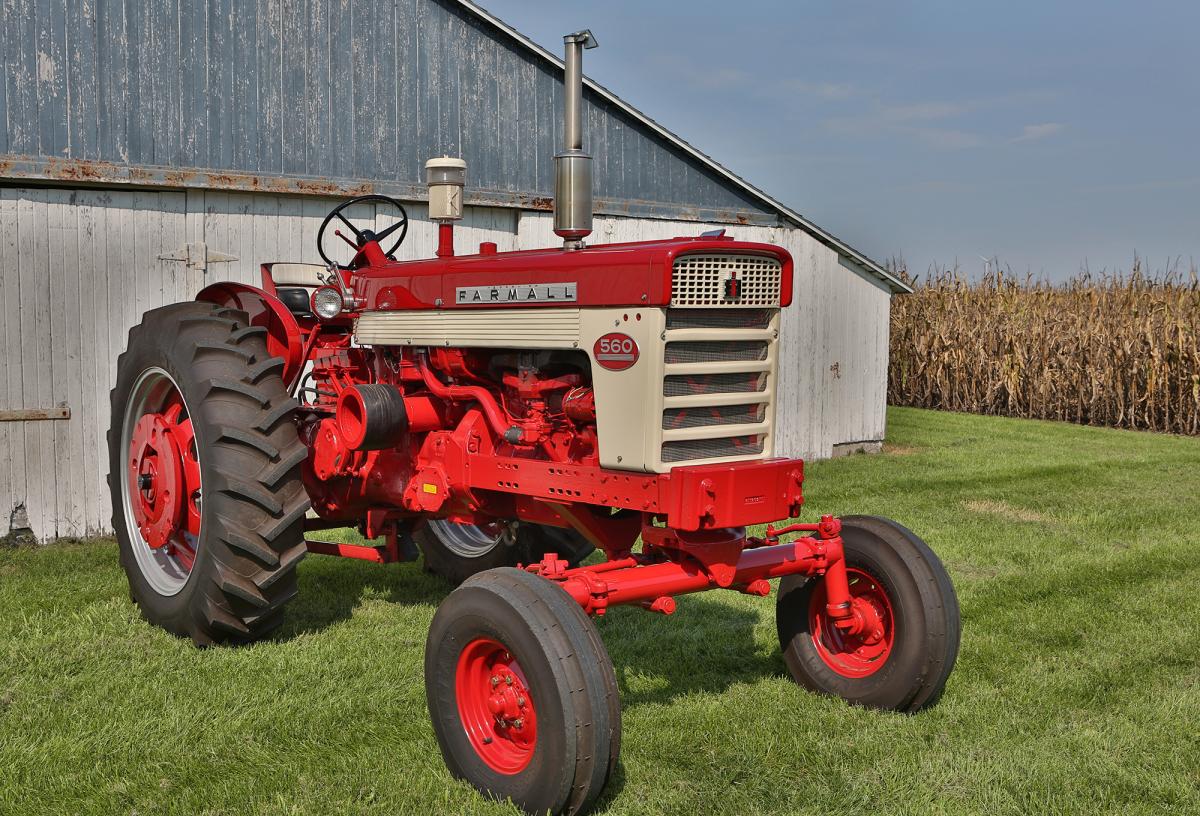 The 560 was the flagship of the 60 series, and the six-cylinder powerplant was available in diesel, gas, and LP versions. The gasoline variety produced 65.25 horsepower on the belt. Max Armstrong collection / Lee Klancher
The 560 was the flagship of the 60 series, and the six-cylinder powerplant was available in diesel, gas, and LP versions. The gasoline variety produced 65.25 horsepower on the belt. Max Armstrong collection / Lee Klancher
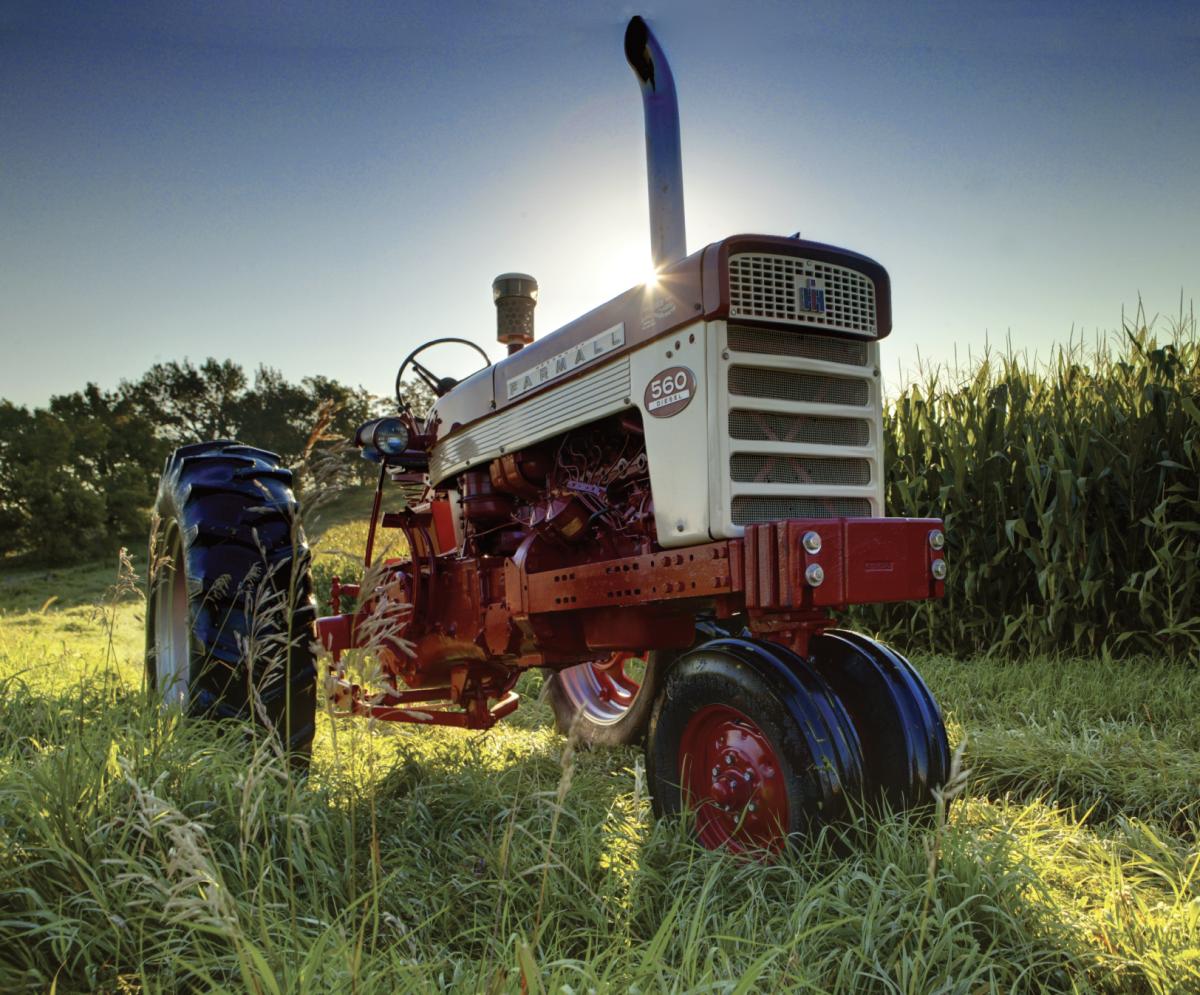 The Farmall 560 introduced new hydraulic systems designed to improve field performance. These included Tel-A-Depth linkages to control implement depth, several choices of hydraulic pumps, and one, two, or three connection valves. Jerry Mez tractor collection / Lee Klancher
The Farmall 560 introduced new hydraulic systems designed to improve field performance. These included Tel-A-Depth linkages to control implement depth, several choices of hydraulic pumps, and one, two, or three connection valves. Jerry Mez tractor collection / Lee Klancher
FARMALL 560 SPECS
The Farmall 560 replaced the Farmall 450. The 560 featured a new six-cylinder engine and other changes consistent with the new 40 and 60 series line. The 560 was available with gasoline (including kerosene and distillate subvariants), LP, and diesel engines. The diesel was now a direct start with glow plugs, instead of the IH-built start-on-gas diesel used in the 450. Maximum drawbar horsepower on the gasoline version was 58.36, but the two-hour rating was 44.83.
The High-Clear 560 used drop rear-axle housings and chain drive similar to the 450, as well as different front axles,
wheel, and tire equipment. The tractors were used in sugarcane-growing areas, with vegetable crops that required higher clearance tractors, and in other similar specialty farming.
The Farmall 560 Cotton Harvester variant had gear-drive extended final housing and a single high front wheel, as well as a platform for reverse running with a mounted two-row cotton picker. Users could obtain a package to convert the tractor to a front-running normal-height tractor for the rest of the year when not under a picker. Cotton-picker tractors could be ordered from the factory, or an existing tractor could be converted.
The International 560 used the same engine selection and mostly the same driveline as the Farmall 560 in a standard tractor layout. The full range of engine choices was available along with large rear tires, giving more drawbar pull than the Farmall.
IH’s diesel engine was direct-start, where the standard engine choice for the Deere 830 had a pony motor for starting the diesel and still cost more per horsepower than the International.
Find more accounts of farm-machine development, testing, and company-maneuverings in Red Tractors 1958–2018.
The 460 and 560 models had something Harvester had not encountered much in the past: a manufacturing flaw. The rear differential’s bull and pinion gears galled under load and could fail under the right conditions. Very few of these tractors failed, but Harvester doubled the warranty on the 460s and 560s, and authorized dealers to charge them for the 19 hours of labor to replace the rear end. New parts were engineered and, eventually, a new oil formula was developed to help reduce strain on the parts. Finally, a massive recall of the 460, 560, and 660 tractors was issued in June 1959.
Kenneth Ryan, a young IHC engineer when the recall was taking place, remembers that dealers weren’t entirely displeased with the recall. They used the allowance for repairs to stay busy during the slow winter months and could perform the repair in less than the allotted 19 hours, turning a good profit.
The actual failure rate of the rear ends was fairly low, and the problem could be fixed with newly tooled parts and better oils. “Most of [the farmers] hadn’t seen a problem with their tractors,” Ryan said. “At the time, I wondered why not just wait and if your tractor does show these symptoms, rebuild it. I thought they were overreacting.”
The entire line, despite the poor publicity, was mainly a success. The 60 series tractors went on to long production lives, and the all-new 240 and 340 tractors were good upgrades to the line that were very well-received. The new square-front tractors brought welcome traffic into IH dealerships. The farm recession of 1957 also began to lift in spring 1958, and farmers found themselves more willing to spend money on new machines in late 1958.
Despite a strike that slowed production at the end of 1958, the new 40 and 60 series fueled the best sales year in the history of IHC in 1959. Total U.S. company sales were $1.7 billion, an increase of 24 percent from 1958. Farm equipment sales were $458 million, up 17 percent from 1958.
 The rear-end failures that prompted Harvester to recall the 60 series tractors proved a fairly rare occurrence. Harvester responded admirably to the issue, but probably caused more negative publicity than necessary. The 60 series proved to be long-lasting reliable tractors for most farmers and were bulletproof once the new parts were installed in the rear end. Wisconsin Historical Society / 24639
The rear-end failures that prompted Harvester to recall the 60 series tractors proved a fairly rare occurrence. Harvester responded admirably to the issue, but probably caused more negative publicity than necessary. The 60 series proved to be long-lasting reliable tractors for most farmers and were bulletproof once the new parts were installed in the rear end. Wisconsin Historical Society / 24639 This 560 spent most of it’s life in southern Indiana, working on the farm owned by the father of well-known Chicago radio broadcaster Max Armstrong. The tractor was sold to a neighbor in the 1980s. The neighbor flipped the tractor over, and then it sat outside for many years. The 560 was returned to Max a few years ago in rough condition. The FFA chapter from the Prairie Central High School in Fairbury, Illinois restored the tractor to pristine condition, and the family heirloom is now Max’s pride and joy. “The lessons learned will stay with them all their lives,” Max said. “I’m proud to be one of the supporters of the FFA.” Max Armstrong collection / Lee Klancher
This 560 spent most of it’s life in southern Indiana, working on the farm owned by the father of well-known Chicago radio broadcaster Max Armstrong. The tractor was sold to a neighbor in the 1980s. The neighbor flipped the tractor over, and then it sat outside for many years. The 560 was returned to Max a few years ago in rough condition. The FFA chapter from the Prairie Central High School in Fairbury, Illinois restored the tractor to pristine condition, and the family heirloom is now Max’s pride and joy. “The lessons learned will stay with them all their lives,” Max said. “I’m proud to be one of the supporters of the FFA.” Max Armstrong collection / Lee Klancher The 560 was the flagship of the 60 series, and the six-cylinder powerplant was available in diesel, gas, and LP versions. The gasoline variety produced 65.25 horsepower on the belt. Max Armstrong collection / Lee Klancher
The 560 was the flagship of the 60 series, and the six-cylinder powerplant was available in diesel, gas, and LP versions. The gasoline variety produced 65.25 horsepower on the belt. Max Armstrong collection / Lee Klancher The Farmall 560 introduced new hydraulic systems designed to improve field performance. These included Tel-A-Depth linkages to control implement depth, several choices of hydraulic pumps, and one, two, or three connection valves. Jerry Mez tractor collection / Lee Klancher
The Farmall 560 introduced new hydraulic systems designed to improve field performance. These included Tel-A-Depth linkages to control implement depth, several choices of hydraulic pumps, and one, two, or three connection valves. Jerry Mez tractor collection / Lee KlancherFARMALL 560 SPECS
The Farmall 560 replaced the Farmall 450. The 560 featured a new six-cylinder engine and other changes consistent with the new 40 and 60 series line. The 560 was available with gasoline (including kerosene and distillate subvariants), LP, and diesel engines. The diesel was now a direct start with glow plugs, instead of the IH-built start-on-gas diesel used in the 450. Maximum drawbar horsepower on the gasoline version was 58.36, but the two-hour rating was 44.83.
The High-Clear 560 used drop rear-axle housings and chain drive similar to the 450, as well as different front axles,
wheel, and tire equipment. The tractors were used in sugarcane-growing areas, with vegetable crops that required higher clearance tractors, and in other similar specialty farming.
The Farmall 560 Cotton Harvester variant had gear-drive extended final housing and a single high front wheel, as well as a platform for reverse running with a mounted two-row cotton picker. Users could obtain a package to convert the tractor to a front-running normal-height tractor for the rest of the year when not under a picker. Cotton-picker tractors could be ordered from the factory, or an existing tractor could be converted.
The International 560 used the same engine selection and mostly the same driveline as the Farmall 560 in a standard tractor layout. The full range of engine choices was available along with large rear tires, giving more drawbar pull than the Farmall.
IH’s diesel engine was direct-start, where the standard engine choice for the Deere 830 had a pony motor for starting the diesel and still cost more per horsepower than the International.
Find more accounts of farm-machine development, testing, and company-maneuverings in Red Tractors 1958–2018.


